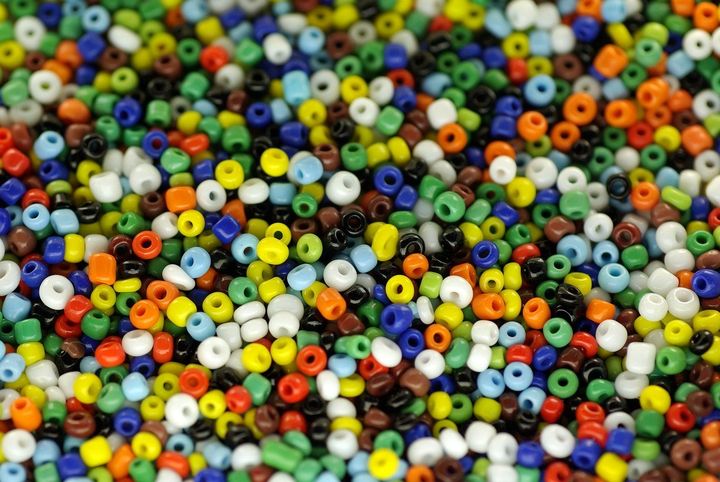This week’s question is about the possibility of 3D printing beads.
Reader Aisha asks:
”I am looking for glass beads to use for my experiment. I am looking for specific shapes other than round like rod shape, cylindrical or ellipsoid. I have a question if you can 3d print demanding beads in 3mm size.”
Glass 3D Printing
This is an interesting question: could beads of this type be 3D printed? There are several considerations here.
But first we have to get one thing out of the way: pure “glass” 3D printing really isn’t a thing. While there have been some experiments with glass 3D printing, there are no glass 3D printers generally available. Part of the issue with glass 3D printing is that it requires extremely high temperatures that make the equipment very expensive. Another issue with glass 3D printing, at least so far, is that it cannot reproduce much detail. Glass, even when heated, flows poorly and thus is suitable only for larger objects with coarse resolution.
One possibility is to use a specialty resin that mimics glass in a very close manner. This product is made by Glassomer, whose resin can be fused into objects containing as much as 60% actual glass. This is sufficient for the production of certain types of lenses, for example. While the Glassomer resin can be used on most resin 3D printers, there is the requirement for very high temperature post-processing. Also, the Glassomer resin is very expensive at around US$700 per 500g.
FFF 3D Printed Beads
Let’s instead examine the more general possibilities of using various 3D printing techniques to produce beads using different materials.
First, there’s the matter of size. A 3mm 3D print is extremely small. It’s so small that common desktop 3D printers would likely be unable to reliably produce objects of that size with any accuracy.
To put it in perspective, the nozzle on most desktop 3D printers is 0.4mm wide. For a 3mm object, you’d have only a could of extrusion threads making up the entire width of the bead. This does not permit much allowance for shape, as there isn’t room for the nozzle to wiggle around to create any.
Even worse, the bead likely must have a hole in the center. This is more “shape”, or as we say here “geometry”, that really cannot be reliably produced by a filament-powered desktop 3D printer.
I’d say filament 3D printers are out for this application.
But what about other processes? Could a resin 3D printer produce 3mm beads in different shapes?
Resin 3D Printed Beads
Resin 3D printers can have higher resolution and reliability than filament 3D printers. In many systems you can see an X-Y resolution of 0.05m. This suggests a design could involve as many as 60 x 0.05mm blocks to make up the width of a 3mm object.
That could be sufficient to devise and produce a reasonably interesting non-blob shape. It could also provide enough resolution to create a decent hole in the bead as well.
However, there’s another problem: support structures. When resin 3D printers create objects, they must be fixed to the print plate. Typically this is done by 3D printing throw-away “legs” for the object that are removed after 3D printing.
But in this case, the objects are really tiny. I can imagine seeing a print plate with an array of tiny 3mm beads, each having one “leg” of support under them. I’m not sure that’s particularly stable, but it might be worth attempting on a suitably tuned machine.
If successful, the 3D printer operator would then have to painstakingly remove the support structure from each and every bead. On a large resin 3D printer plate having a build area of, say, 200 x 120 mm, you could expect to produce over 400 beads in one print job — and then spend time picking off the supports.
This approach could produce glass-like beads using the aforementioned Glassomer resin, but as you might expect, they would be quite expensive.
This seems possibly feasible, but perhaps we can do better.
SLS 3D Printed Beads
Let’s think about SLS 3D printing, where a flat bed of powder is selectively sintered by a laser. SLS systems are noted for their high resolution and the lack of need for support structures: the surrounding non-fused powder supports fused segments.
The other advantage of using SLS is that you can build within the entire volume of the build chamber, as opposed to the one-layer-of-parts requirement of the filament and resin processes. In other words, you can Tetris in as many beads as could fit within the build chamber, and no need to account for support material, either.
For a typical low-cost SLS system like the Sinter Lisa Pro, you’d be using a build volume of 110 x 160 x 230 mm. If we could 3D print the 3mm bead in a 5 x 5 x 5 mm volume, this means we could make over 32,000 beads in a single job run.
That’s a lot of beads! Of course, fewer could be produced easily. You’d only to set up the job to match the number of beads required.
The beads in SLS systems would be made from a nylon material and could be dyed later to any desired color. It’s also possible to use glass-filled nylon powder, which would have some glass content, but certainly the beads would not be transparent. The glass fibers infused in the nylon would be for strengthening the mechanical properties of the prints, not for optical properties.
My recommendation here is to use SLS technology to produce the beads. If you don’t have an SLS system on hand — and most people don’t — then it’s quite possible to use any of several 3D print services to run this job, if provided suitable 3D models.
Beads are possible! But glass beads sufficient for experimental purposes may be another story.

